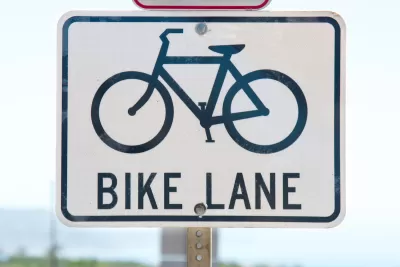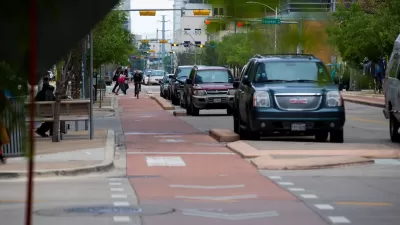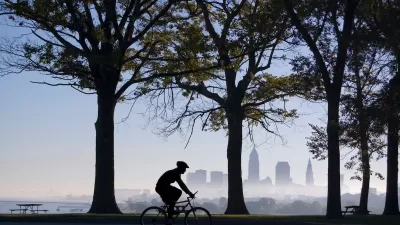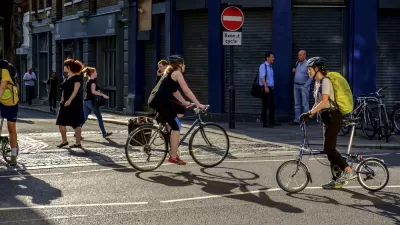Data from a much-criticized bike lane project in Montgomery County shows no noticeable decrease in vehicle capacity and a sharp decrease in bike fatalities.

Statistics from the Maryland State Highway Administration (SHA) reveal “virtually no change in driving time” on Old Georgetown Road in Montgomery County, where the installation of separated bike lanes last December spurred local opposition and fearmongering about added congestion. The data also shows “a plunge in fatalities and a tripling of bicycle traffic,” reports Ethan Goffman in Greater Greater Washington.
Goffman notes that “Most controversial has been removing a lane of traffic from each direction and adding five-foot bike lanes protected by an additional five-foot buffer, along with plastic bollards, from Nicholson Road in the north to just south of the Capital Beltway.” A petition against the bike lanes claiming a 39 percent reduction in traffic capacity was signed by over 9,000 people.
“Contrary to intuition, meanwhile, overall traffic flow has been unaffected: ‘In the northbound AM and PM peak directions, travel times along the entire corridor increased by about 60 seconds since implementation of the bike lanes,’ said the Maryland SHA spokesperson. Southbound, ‘travel times initially increased, but have since reduced to the levels before the bike lane project.’” The project also had no significant impact on bus travel times.
FULL STORY: Data suggests fears of bike lane-induced vehicle traffic nightmare on Old Georgetown Road are unfounded

Manufactured Crisis: Losing the Nation’s Largest Source of Unsubsidized Affordable Housing
Manufactured housing communities have long been an affordable housing option for millions of people living in the U.S., but that affordability is disappearing rapidly. How did we get here?

Americans May Be Stuck — But Why?
Americans are moving a lot less than they once did, and that is a problem. While Yoni Applebaum, in his highly-publicized article Stuck, gets the reasons badly wrong, it's still important to ask: why are we moving so much less than before?

Using Old Oil and Gas Wells for Green Energy Storage
Penn State researchers have found that repurposing abandoned oil and gas wells for geothermal-assisted compressed-air energy storage can boost efficiency, reduce environmental risks, and support clean energy and job transitions.

Updating LA’s Tree Rules Could Bring More Shade to Underserved Neighborhoods
A new USC study finds that relaxing Los Angeles’ outdated tree planting guidelines could significantly expand urban tree canopy and reduce shade disparities in lower-income neighborhoods, though infrastructure investments are also needed.

California's Canal Solar Projects Aim to Conserve Resources and Expand Clean Energy
California’s Project Nexus has begun generating electricity from solar panels installed over irrigation canals, with researchers and state agencies exploring statewide expansion to conserve water and boost clean energy production.

HHS Staff Cuts Gut Energy Assistance Program
The full staff of a federal program that distributes heating and cooling assistance for low-income families was laid off, jeopardizing the program’s operations.
Urban Design for Planners 1: Software Tools
This six-course series explores essential urban design concepts using open source software and equips planners with the tools they need to participate fully in the urban design process.
Planning for Universal Design
Learn the tools for implementing Universal Design in planning regulations.
Heyer Gruel & Associates PA
City of Moreno Valley
Institute for Housing and Urban Development Studies (IHS)
City of Grandview
Harvard GSD Executive Education
Salt Lake City
NYU Wagner Graduate School of Public Service
City of Cambridge, Maryland





























